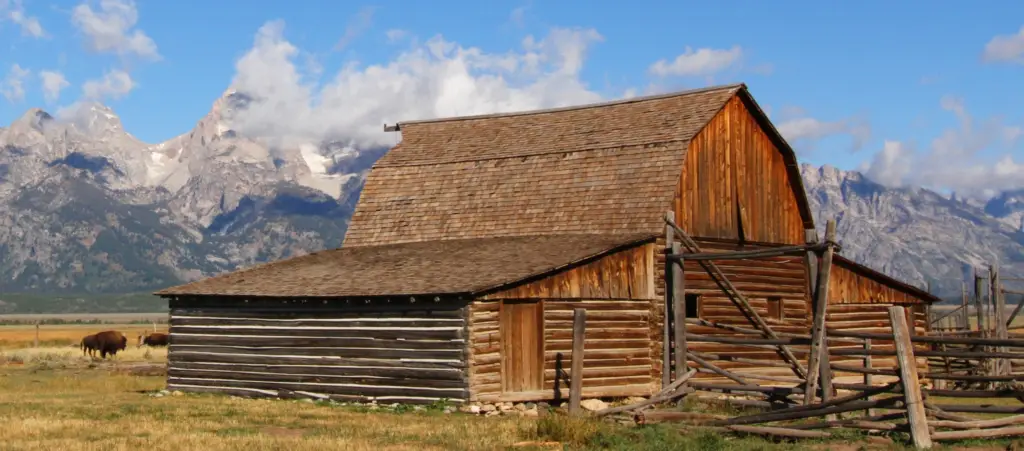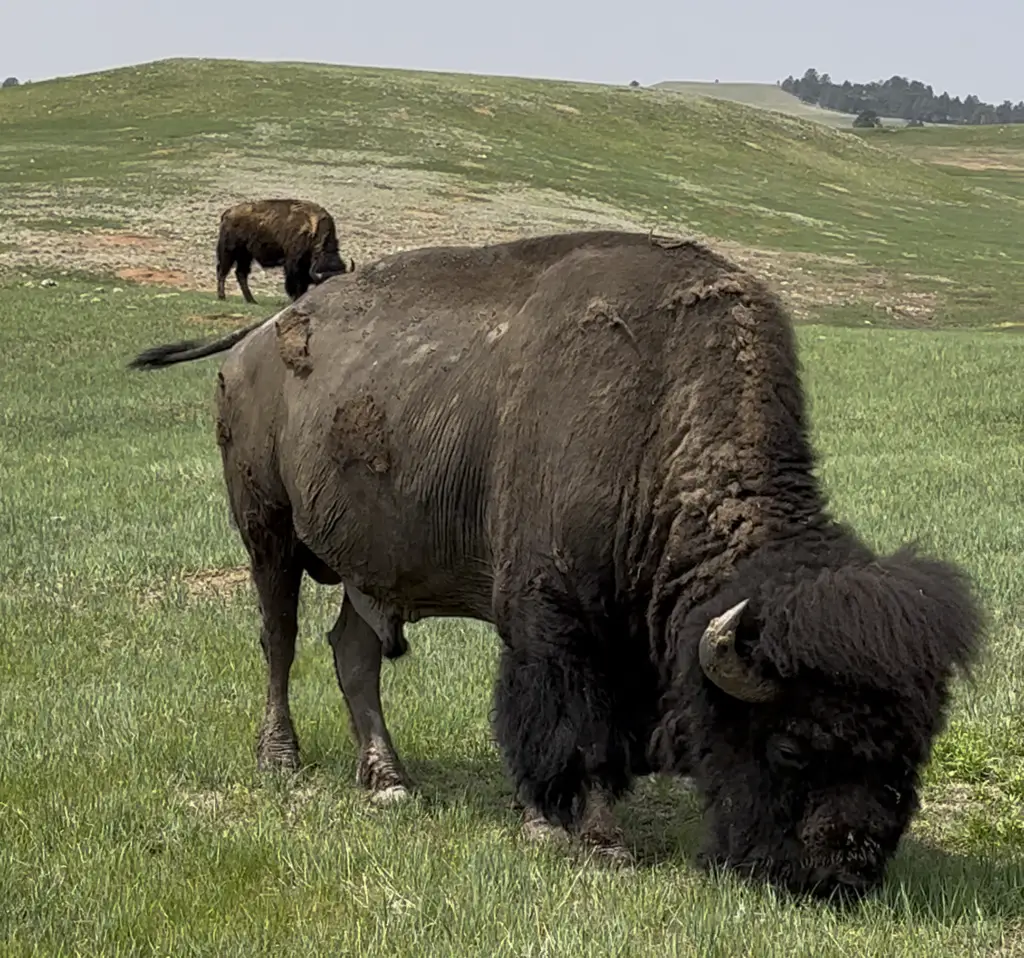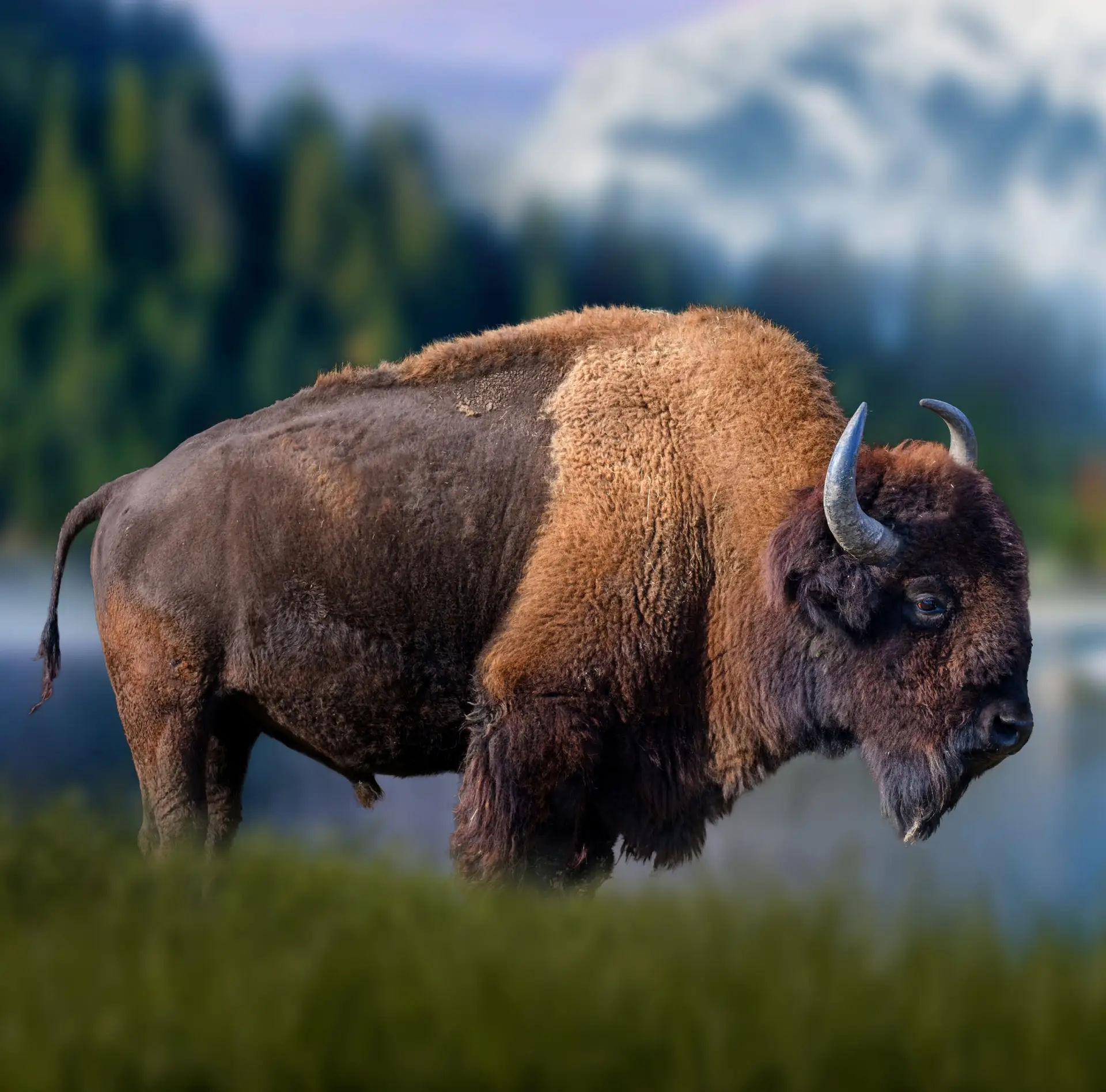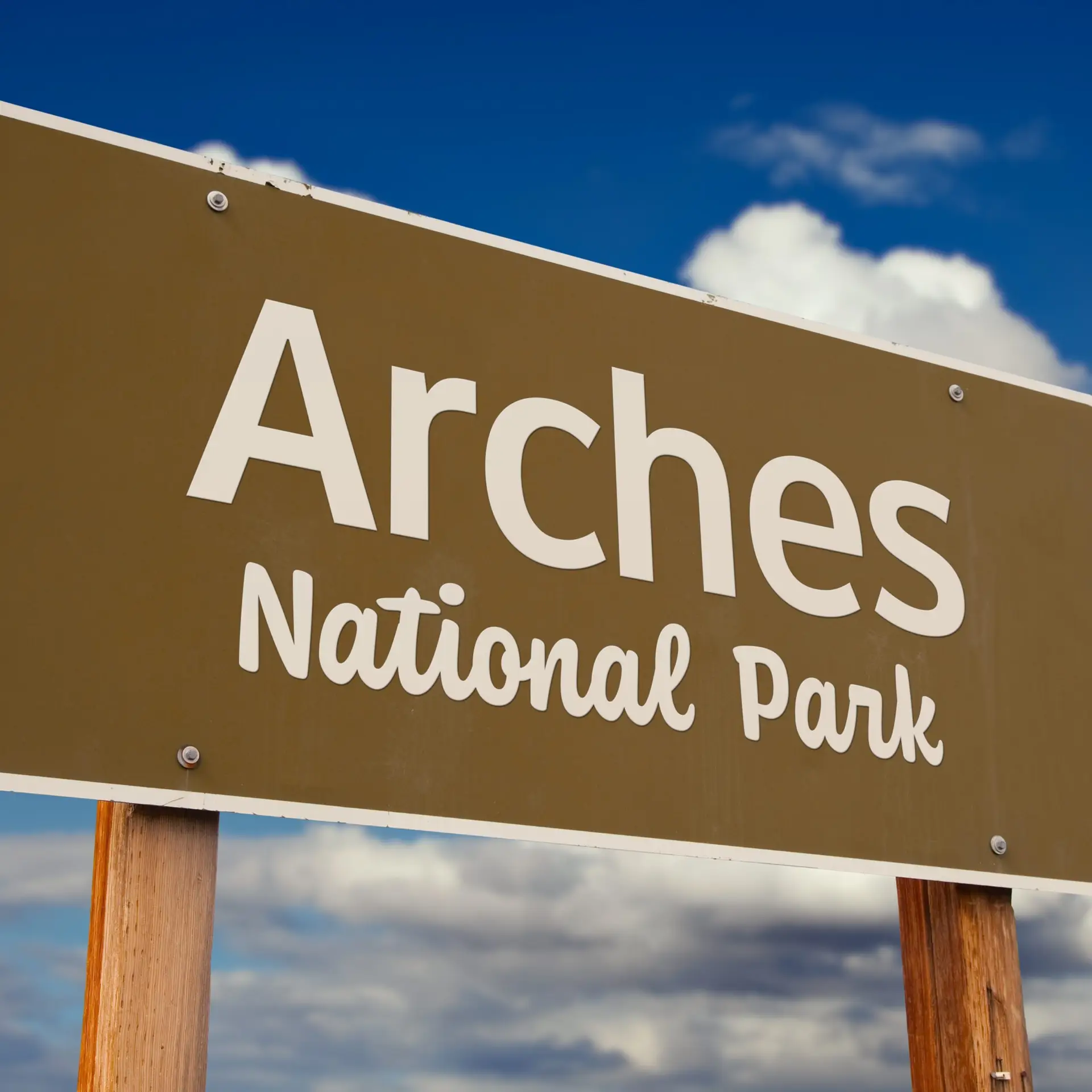Few experiences capture the spirit of the American West quite like seeing free-roaming bison. As our national mammal and emblem of the continent, bison are a powerful reminder of the wild landscapes that still exist today.
Watching them in their natural habitat is always a thrill and a moment you’ll never forget. They are also one of the best reasons to visit our public lands.
In this post, we share ten of our favorite places to see bison in the American West and nine more worth considering. While these aren’t the only spots to find bison, they offer some of the best opportunities to view these magnificent animals on your travels.
#1 Yellowstone National Park

Location: Northeastern Wyoming with boundaries overlapping into Montana and Idaho
Bison population: 3,000 to 6,000
History: Yellowstone is home to the largest wild bison herd in the United States and is the only place in the U.S. where they have lived continuously for as long as humans have kept records.
The herd has free movement across the park’s boundaries, and its population can fluctuate due to harsh winters and predators hunting them in and outside the park.
How to see the bison: Yellowstone is the place to go if you want the best chance of seeing open-range bison in the American West. You can see them anywhere in the park. Solitary males tend to wander away from the herds and can show up in places you’d never expect, like standing on a boardwalk while you’re viewing the thermal features in the park.
However, the herds often congregate close to rivers. The Lamar Valley in the northeast area of the park is a popular gathering place for them. We’ve seen bison along the valley road every time we’ve driven it.
More information
Follow this link to a video of a “bison jam” in Yellowstone.
#2 Grand Teton National Park

Location: Western Wyoming just north of Jackson
Bison population: 600 to 800
History: In an attempt to create a wildlife exhibit in the Jackson Hole area in the 1940s, the governor of Wyoming, with financial help from Laurance Rockefeller, imported bison from Yellowstone to the area. The exhibit could not contain its new occupants, and the decedents of those that escaped from the exhibit now make up the free-ranging Jackson Bison Herd.
The animals now roam where they please and split their time between Grand Teton National Park (usually in summer) and the adjacent National Elk Refuge (more often in winter). The herd is one of the largest free-roaming bison herds in the U.S and the only one in Wyoming outside of Yellowstone.
How to see the bison: Your best chance is in the southern section of Grand Teton NP during warmer months. They often hang out close to the Gros Ventre River and can be seen on either side of Highway 191, close to the Jackson Hole Airport.
Photographers are always looking for that one-in-a-million photo opportunity when a few bison wander over to the historic Moulton Barns along Mormon Row where they can capture three iconic images in one shot: the barns, the bison, and the magnificent Grand Teton Range in the background.
#3 Custer State Park

Location: In the Black Hills of western South Dakota
Bison population: about 1,500
History: In 1914, the park purchased 36 bison from the Scotty Philip herd near Pierre, South Dakota, and brought them to the park. For over a hundred years now, the park has managed the herd with annual roundups to ensure the health of the animals and to cull their numbers to maintain the park’s fragile ecosystem.
How to see the bison: Most of the year, they wander freely. The younger ones generally stay close to a group, while the older males roam all regions of the park. The bulk of the herd often can be seen in the park’s southern section, south of the Wildlife Loop Road. Stop at the visitor center on the park’s east side, where a large horizontal map of the park with miniature animals placed on top will tell you where the herd has been seen recently.
Your best bet for a truly amazing bison-sighting experience is to attend the Annual Bison Roundup, usually held the last weekend in September. At this multi-day event, horseback riders bring the bulk of the herd to the corrals, where they receive their annual health checks.
More information
More more information
#4 Wind Cave National Park

Location: In the Black Hills of western South Dakota
Bison population: 400 to 450
History: From the park’s website, “In 1913, the American Bison Society sent 14 bison from the New York Zoological Gardens (now the Bronx Zoo) to Wind Cave. An additional six bison were sent to the park in 1916 from Yellowstone National Park. It is from these bison that Wind Cave’s herd is descended from.”
How to see the bison: Since they are almost always on the move, you could see bison anywhere in the park anytime. On past visits, we’ve driven the park roads and seen no bison whatsoever. On other occasions, we saw them in large numbers right by and on the road. We’ve also run into them while hiking on established trails in the park.
Combined with a visit to Custer State Park, which is adjacent to the north, you will have a good chance of a close encounter with bison.
More information
#5 Badlands National Park
Location: Southwestern South Dakota, a one-hour drive east of Rapid City
Population: About 1,200
History: In 1963, the park brought in 50 bison from Theodore Roosevelt National Park
How to see the bison: Bison often frequent the park’s north unit by the Pinnacle Entrance (directly south of Wall, SD) and to the west along Sage Creek Rim Road. We’ve driven this gravel rim road many times and have had luck finding them close to the road. We have not had luck finding them east of the Pinnacle entrance, but they are known to wander all areas of the park.
More information
#6 and #7 Theodore Roosevelt National Park
Location: The park has two separate units in Western North Dakota
Bison population: about 350 in the South Unit and 200 in the North Unit
History: A small group of bison were brought to the South Unit of the park in 1956. From that initial herd, about 20 bison were transferred to the North Unit in 1962. The park now manages the herd to about 350 in the south and 200 in the north to maintain a healthy balance between the herd sizes and the resources they have to survive.
How to see the bison: Every time we’ve driven through the South Unit, we’ve seen bison along the park’s Scenic Loop Drive. On several occasions, we had to stop the car to allow a group to slowly walk across the road in front of us. Visitors report the same for the North Unit, but we haven’t been so lucky finding bison by the road there.
If you hike in the South Unit, especially by the river, you are likely to see bison, as this is one of their favorite hangouts. Solitary males also tend to roam the western side of the South Unit by the Petrified Forest Loop Trail.
More information
#8 CSKT Bison Range
Location: Northeastern Montana, about a 45-minute drive north of Missoula
Population: about 350
History: From the park’s website – The bison range was originally founded in 1908 as the National Bison Range on land belonging to the Confederated Salish and Kootenai Tribes (CSKT). In recognition of their historical claim to both the land and the bison herd, the Bison Range was officially restored to the CSKT by Congress in 2020. It is now fully owned and managed by the CSKT Natural Resource Department.
When the National Bison Range was established in 1908, a herd of 40 bison was initially placed on the range. These bison came from the Pablo-Allard herd, a privately owned herd raised by Michel Pablo and Charles Allard, members of the Flathead Indian Reservation.
How to see the bison: You can find bison anywhere within the range. However, they more often spend time in the park’s interior or along Mission Creek in the north area of the park. You can drive the two-way Prairie Drive along Mission Creek or the one-way Red Sleep Mountain Drive in the south and finish the loop back to the entrance on Prairie Drive. See map here.
More information
#9 Antelope Island State Park

Location: In the southeastern corner of the Great Salt Lake, about 20 miles west of I-15
Population: 500 to 700
History: From the State of Utah park archives – John Dooly, who owned most of Antelope Island, purchased some of the bison for the island. On February 15, 1893, 4 bulls, 4 cows and 4 calves were boated to the island. These twelve animals provided the foundation for what has grown into one of the oldest and largest publicly owned herds of bison in the nation.
The herd is carefully managed through an annual bison roundup during the last weekend of each October, where animals are counted, checked for health, and some are auctioned off to prevent overgrazing and maintain a sustainable population on the island.
How to see the bison: Bison can be found throughout the park, occasionally close to the park roads and hiking trails. The annual bison roundup is an excellent time to watch horseback riders bring in the herd.
More information
#10 Fort Niobrara Wildlife Refuge

Location: Northern Nebraska, center of the state by the town of Valentine
Population: about 350
History: President William Taft established Fort Niobrara National Wildlife Refuge on January 11, 1912. According to Matt Sprenger, the refuge manager for U.S. Fish and Wildlife at Fort Niobrara, bison were brought to the refuge in 1913. The animals came from a private herd in Nebraska.
How to see the bison: In the spring, the herd often hangs out close to the visitor at the south end of their winter range. Spring is an excellent time to drive the gravel park roads and view the animals, especially the newborn calves, close to the road.
The herd is more difficult to get close to once they are moved to their summer range. See park map here.
More information
Nine more public lands in the American West with bison herds
Below are nine more places to find bison in the American West. Many of these have smaller herds than the places listed above but can be just as thrilling to visit. Check out the links for each to learn more about them before you go.
Tallgrass Prairie National Preserve, Kansas – link
Wichita Mountains Wildlife Refuge, Oklahoma – link
Caprock Canyons State Park and Trailway, Texas – link
Catalina Island, California – link
Rocky Mountain Arsenal National Wildlife Refuge, Colorado – link
Bear Butte State Park, South Dakota – link
Henry Mountains, Utah – link
Grand Canyon National Park – North Rim, Arizona – link
Fort Robinson State Park, Nebraska – link
Feature image source: Adobe Stock



